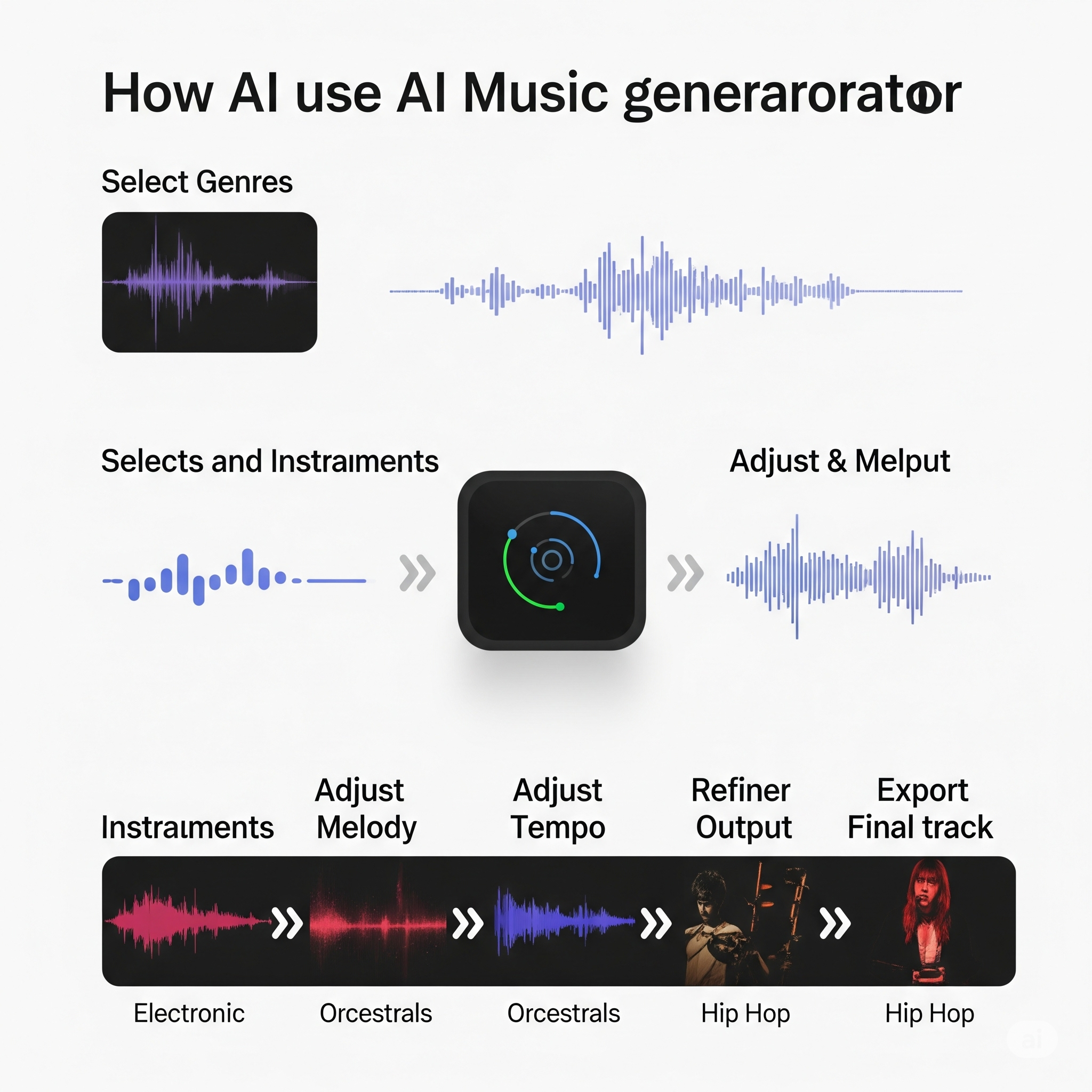In a world where creativity meets code, music is no longer limited to those with years of studio experience or expensive equipment. With the rise of AI music generators, even beginners can create professional-sounding tracks with just a few clicks. Whether you’re a content creator, indie game developer, YouTuber, or an artist looking for a new sound, AI is transforming how music is imagined and produced.
What is an AI Music Generator?
An AI music generator is a tool that uses machine learning to compose original music. These systems are trained on thousands of musical patterns, genres, instruments, and tempos to create music based on a user’s input. Instead of manually arranging every beat or chord, you can simply describe what you want — a sad piano melody, a high-energy trap beat, or cinematic ambient music — and the tool creates it for you.
Some AI tools require you to input text, while others let you tweak instruments, keys, mood, or tempo manually. Either way, you’re not starting from scratch.
Why Use an AI Music Generator?
Here’s why these tools are gaining popularity among creators, musicians, and marketers alike:
🎵 Instant Music Creation – Skip the hours of composing and generate full-length songs in minutes.
🎧 Royalty-Free Output – Many tools produce copyright-free music, so you can monetize it without legal concerns.
🧠 No Musical Skills Needed – You don’t need to know music theory or own expensive instruments.
🎬 Perfect for Background Music – Great for YouTube intros, podcast beds, ads, games, or meditation tracks.
🎨 Inspiration On-Demand – Stuck in a creative block? Let AI offer a starting point to build upon.
How Does an AI Music Generator Work?
Most AI music generators follow a three-step process:
Input Prompt or Parameters: Users can describe what they want — e.g., “lofi hip-hop beat with rain sounds” — or choose a genre, mood, and tempo.
AI Processing: The AI uses deep learning models trained on audio datasets to generate music that fits your input.
Output & Download: The track is rendered, and users can download the audio (usually in MP3 or WAV).
Some platforms also allow you to export individual stems (drums, bass, vocals) for further editing in a DAW (Digital Audio Workstation).
Best AI Music Generators You Can Try Today
Here are some top-rated platforms, each suited to different user needs:
| Tool | Best For | Free Plan? | Output Quality |
|---|---|---|---|
| ImagineArt Music Studio | Visual + Music Creators | ✅ | 🎧🎧🎧🎧🎧 |
| Suno.ai | Full vocal song generation | ❌ | 🎧🎧🎧🎧 |
| Boomy | Beginners and quick loops | ✅ | 🎧🎧🎧 |
| Soundraw | Marketing and YouTube videos | ✅ | 🎧🎧🎧🎧 |
| Aiva | Classical and cinematic scoring | ✅ | 🎧🎧🎧🎧 |
If you’re looking for a free AI song maker without copyright, ImagineArt Music Studio is an all-in-one choice that supports lyrics, vocals, and customization without needing music experience.
How to Use an AI Music Generator (Step-by-Step)
Here’s a typical user journey using ImagineArt’s AI music generator:
Step 1: Choose a Track Type
First create an account with help of Tempmail to avoid using your personal Gmail. Decide whether you want:
Instrumental music
AI-generated vocals
Mood-based soundtracks (e.g., sad, energetic, ambient)
Step 2: Add Text or Choose Genre
Write a prompt like:
“Cinematic background music with slow strings and ambient synths”
Or pick from presets like Lo-fi, EDM, Jazz, Classical, or Trap.
Step 3: Customize (Optional)
Tweak:
BPM (Beats Per Minute)
Instrument focus
Duration (15s to 5 minutes)
Step 4: Generate and Preview
Let the AI do its magic. In a few seconds, a full track is ready. You can listen, regenerate, or download it.
Step 5: Export and Use
Download your royalty-free track and use it in YouTube videos, podcast intros, reels, or video games.
Real-Life Use Cases
Here are some practical examples of how people are using AI music generators:
YouTubers: Creating original background music for monetized videos without worrying about copyright claims.
Podcast Hosts: Generating unique intro/outro jingles for each episode.
Fitness Coaches: Making custom workout playlists for mobile apps or social content.
Game Developers: Building immersive soundtracks for indie games on Unity or Unreal Engine.
TikTok Creators: Making catchy, trending beats tailored to short video formats.
Challenges and Limitations
No technology is perfect. Here are a few limitations to keep in mind:
🎚️ Less Human Feel: AI can lack the emotional touch or imperfections that make human music soulful.
💽 File Size & Format: Some tools limit download formats (e.g., no stems or high-res WAV).
💸 Pricing: While many tools offer free versions, high-quality tracks often require a subscription.
What’s Next in AI-Generated Music?
The future of AI in music looks promising:
Voice cloning with accurate lip-syncing and pitch control.
Real-time music generation for live streams or games.
Personalized playlists based on your mood, heartbeat, or calendar.
AI music collaborations with real artists (already happening with David Guetta and others).
As models improve, we might soon see AI-written songs topping global charts.
Final Thoughts
AI music generators are no longer a futuristic idea — they’re here, they work, and they’re empowering millions of creators. Whether you’re producing a short film, launching a brand, or just having fun, tools like ImagineArt Music Studio let you compose professional, copyright-free music in minutes.
So if you’ve ever wondered how to make music without knowing music, this is your moment. AI is the co-creator you didn’t know you needed.















Leave a comment